Measuring sewage flow presents unique challenges. Selecting the right flow meter ensures accurate monitoring and prevents maintenance headaches.
Electromagnetic flow meters are ideal for most sewage applications, handling raw wastewater and sludge with ±1-2% accuracy when properly installed, while ultrasonic and Doppler meters work well for partially filled pipes or difficult access points.
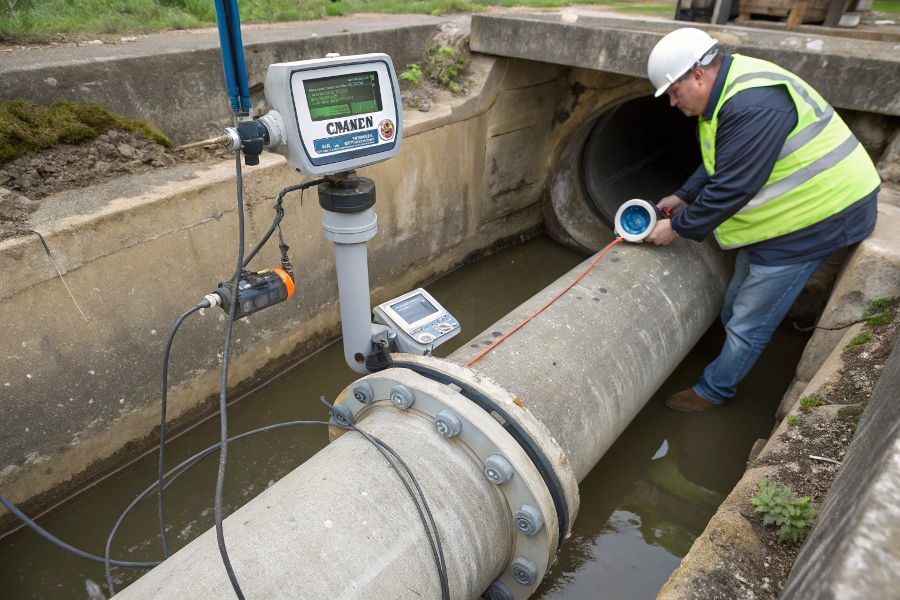
Sewage Flow Meter Installation
Having installed over 500 sewage flow meters, we’ve identified these key selection factors.
How Do You Measure Sewage Flow?
Special techniques account for sewage characteristics.
Sewage flow is typically measured using full-pipe electromagnetic meters in pressurized lines or ultrasonic Doppler/clamp-on meters in open channels, with proper sensor selection1 crucial to handle solids, air bubbles, and varying conductivity.
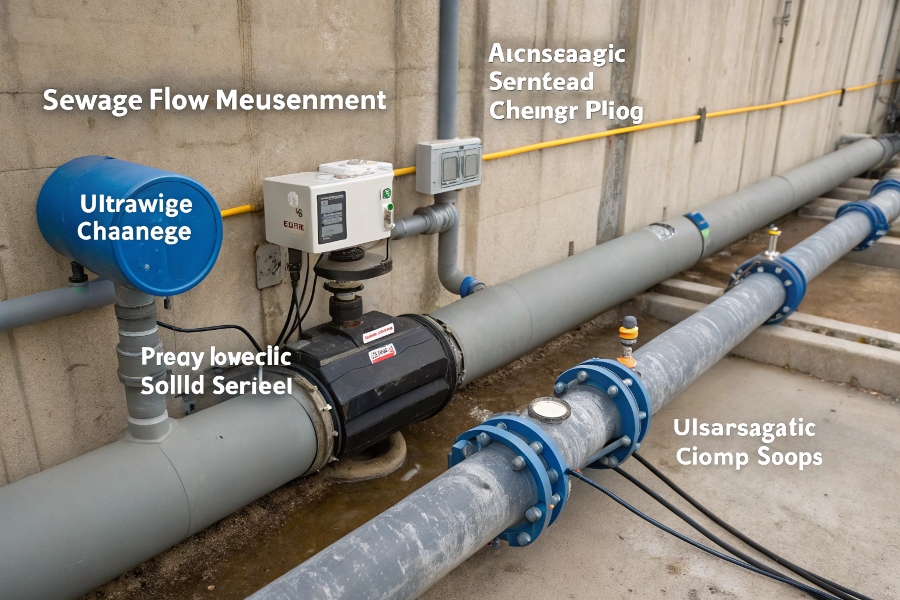
Sewage Flow Measurement Techniques
Key measurement approaches include:
Sewage Flow Measurement Options
| Method | Best For | Accuracy | Limitations |
|---|---|---|---|
| Full-pipe Magnetic | Pressurized sewage | ±1-2% | Requires clean electrodes |
| Doppler Ultrasonic | Open channels | ±2-5% | Needs particle content |
| Clamp-on Ultrasonic | Temporary measurements | ±5% | Lower accuracy |
| Area-Velocity | Partially filled pipes | ±5-10% | Needs regular cleaning |
| Insertion Magnetic | Large pipes | ±2% | Risk of clogging |
Proper installation prevents most issues.
Which Device Is Used to Measure the Flow of Wastewater?
Multiple technologies serve different needs.
Wastewater treatment plants primarily use electromagnetic flow meters (85% of applications) for their reliability with dirty flows, while Doppler ultrasonic meters handle open channel flows, and area-velocity sensors monitor collection systems.
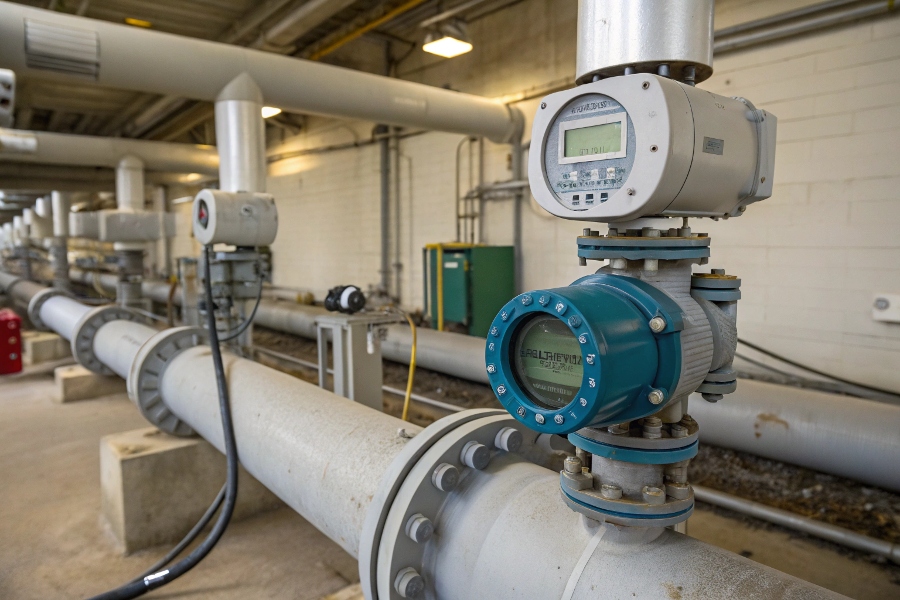
Wastewater Flow Measurement Devices
Here’s how different meters compare:
Wastewater Meter Comparison Chart
| Meter Type | Installation Effort | Maintenance Needs | Typical Lifespan | Cost Factor |
|---|---|---|---|---|
| Electromagnetic | Medium | Low | 10-15 years | $$ |
| Doppler Ultrasonic | Easy | Medium | 5-8 years | $$$ |
| Insertion Propeller | Hard | High | 3-5 years | $ |
| Area-Velocity | Medium | High | 5-7 years | $$ |
| Open Channel Flume | Hard | Low | 15+ years | $$$$ |
Match the meter to your specific wastewater characteristics.
What Is a Sewer Flow Meter?
Specialized equipment for challenging conditions.
A sewer flow meter is a ruggedized measurement device designed to handle raw sewage’s abrasive, solid-laden flows, typically using non-clogging electromagnetic or ultrasonic technology with easy-clean features for reliable operation.
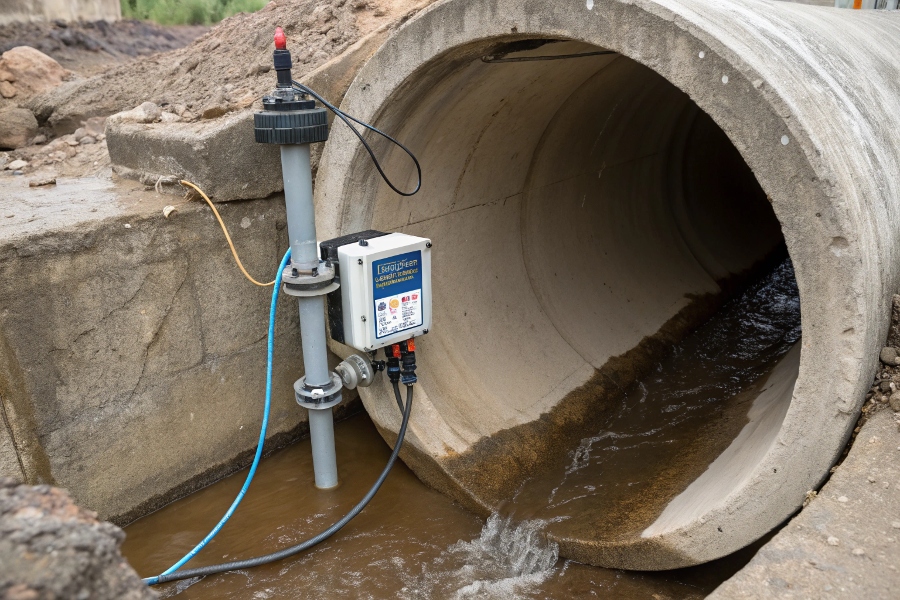
Sewer Flow Meter Design
Critical sewer meter features:
Essential Sewer Flow Meter Features
| Feature | Importance | Implementation Example |
|---|---|---|
| Non-clogging design2 | Prevents blockage | Electrode flush system |
| Abrasion resistance | Handles solids | Ceramic liners |
| Self-cleaning | Reduces maintenance | Ultrasonic cleaners |
| Submersible option | For manhole install | IP68 rated housing |
| Bidirectional measurement | Sewer reversals | Dual-direction calibration |
These features ensure long-term reliability.
What Is the Best Flow Meter for Sludge?
Thick, abrasive flows need special consideration.
For sludge applications, full-bore electromagnetic flow meters with ceramic liners and platinum electrodes provide the most reliable (±2% accuracy) solution, though Doppler ultrasonic meters can work for thicker slurries above 5% solids content.
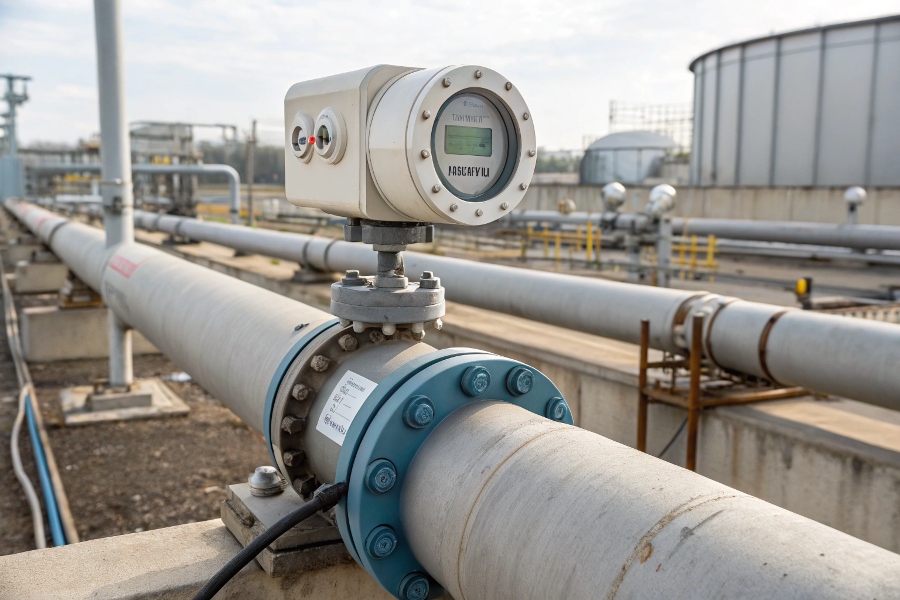
Sludge Flow Measuremen
Sludge meter selection factors:
Sludge Meter Selection Guide
| Sludge Type | Solid Content | Recommended Meter | Key Features Needed |
|---|---|---|---|
| Primary | 3-8% | EM with ceramic liner | Abrasion resistance |
| Secondary | 1-3% | Standard EM meter | Self-cleaning electrodes |
| Digested | 5-10% | Doppler ultrasonic | Non-contact measurement |
| Chemical | Variable | Lined EM with flush ports | Chemical compatibility |
| Industrial | >10% | Coriolis (if budget allows) | Mass measurement |
Always verify viscosity ranges when selecting.
Conclusion
Electromagnetic flow meters remain the sewage measurement workhorse, but alternative technologies better serve special cases like sludge or open channels – choose based on your specific wastewater characteristics and pipe conditions.
